Feeding Taiwan for Four Centuries: Milkfish
Cathy Teng / photos by Jimmy Lin / tr. by Phil Newell
September 2023

Did you know that a milkfish has 222 bones? This species is nonetheless popular among ordinary Taiwanese, and is part of a well-developed industry value chain. From the development of milkfish aquaculture to its place on the dining table, Taiwanese use milkfish to the fullest, from head to tail.
Milkfish is an important aquaculture species in Taiwan. It is high in protein and was an important source of nutrition for early Han Chinese settlers. You can see it everywhere from “five-ingredients milkfish” (cooked with mushrooms, carrots, wood-ear fungus, bamboo shoots, and orange daylilies, all shredded or sliced) to the popular snack of milkfish congee. Taiwan Panorama has previously reported on how textile firms in Tainan are transforming waste fish scales into functional fibers. The milkfish is part of many stories on this island.
A fish with many names
Distributed across tropical and subtropical seas in the Indian and western Pacific oceans, the milkfish is known to science by the Latin name Chanos chanos. Taxonomically, it is the sole living species in its family, the Chanidae.
Huang Chih-yang, associate professor in the Department of Aquaculture at National Taiwan Ocean University, explains why this fish has its Chinese name of shimuyu (“louse-eye fish”): “There are two adipose eyelids on its face which are transparent when the fish is fresh but turn a milky white color when cooked. That is why they are also called ‘shaded-eye fish’ [zhemuyu] and ‘membrane-shaded eye’ [mozhemu].” Before special feed for milkfish was widely available, they ate algae growing on the bottom of shallow ponds and therefore got the moniker “seaweed fish” (haicaoyu). Later they gained other appellations, including “milkfish” (niunaiyu), “fondly-thinking-of fish” (simuyu), and “tranquility fish” (anpingyu). When exported to China, as they have been in recent years, they are called “number-one scholar fish” (zhuangyuanyu). Cheng Weichung, a scholar at the Academia Sinica, has contended, based on historical materials, that sat-bák-hî, the Taiwanese pronunciation of shimuyu, may have come from the Spanish sábalo and have been introduced into Taiwan by ethnic Chinese from Manila. There is also the legend of its being called “Koxinga fish” after the arrival in Taiwan of Zheng Chenggong (also known as Koxinga, meaning “Lord of the Imperial Surname”). Clearly, this fish has a remarkable number of names in Taiwan.

Eric Siu-kei Cheng, who learned about milkfish only after coming to Taiwan, promotes it unreservedly in the hope that it will gain even more aficionados.
From wild fish to aquaculture product
Eric Siu-kei Cheng, an associate professor in the Department of Cultural Resources and Leisure Industries at National Taitung University, serves as our guide to the world of milkfish. But in fact he is a “city boy” from Hong Kong who only learned about milkfish after coming to Taiwan.
Early in the morning, he takes us on a visit to Xinwen, a community in Chiayi County’s Budai Township where he undertook field research during his doctoral studies.
Milkfish aquaculture in Taiwan is mainly based in hot areas such as Yunlin, Chiayi, Tainan, and Kaohsiung. In the early days milkfish fry had to be caught at river estuaries, and since they were so valuable, their sale required the presence of an unbiased third-party “fish counter.” This was the origin of the “fish-counting songs” that are part of local culture. Even now you can go on YouTube and listen to fish counters singing rhythmically as they count fish fry.
However, this kind of scene is increasingly rare. In 1983 Lin Lietang, known as “the father of milkfish in Taiwan,” successfully bred milkfish fry in large numbers for the first time.
As we travel along Provincial Highway 61, Eric Cheng points to the fishponds along both sides of the road. In the early days, milkfish were raised in shallow ponds. This was to enable sunlight to penetrate to the bottom of the ponds so that algae would grow as food for the milkfish. In recent decades milkfish ponds about two meters deep have been developed—the deeper water can retain warmth (milkfish are vulnerable to cold) while many more fish can be farmed in these ponds.
Cheng shares some of his considerable knowledge of milkfish: “The milkfish consumed in Taiwan are mainly four to eight months old, and mostly weigh around 900 grams when sold. But did you know that the largest milkfish in the world can grow as big as 180 centimeters long?”
Although urban folk have long since lost contact with the rhythms of nature, farmers and fishermen still work and rest according to the changing seasons. Cheng explains that traditionally fishermen in the Chiayi–Tainan belt usually stock their ponds with milkfish fry in April, and wait for them to mature into the summer and autumn, harvesting them from July to November. Meanwhile in Kaohsiung, where the climate is somewhat warmer, the fish can spend the winter in the ponds and be harvested as late as the following April. Since this is outside the main harvest season for milkfish, prices are higher, and this practice enables Taiwanese to enjoy milkfish all year round.
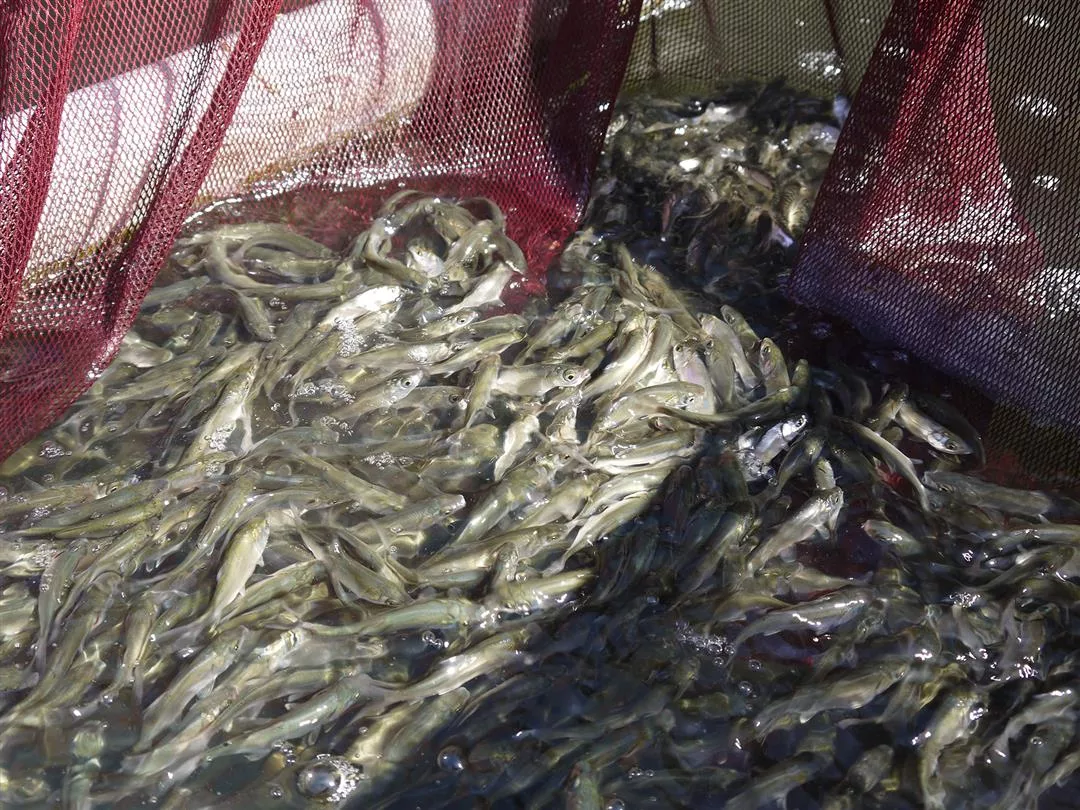
There is a fine division of labor in the milkfish industry, with specialized firms for everything from hatching fish eggs and raising fry to farming adult fish. (courtesy of Eric Cheng)
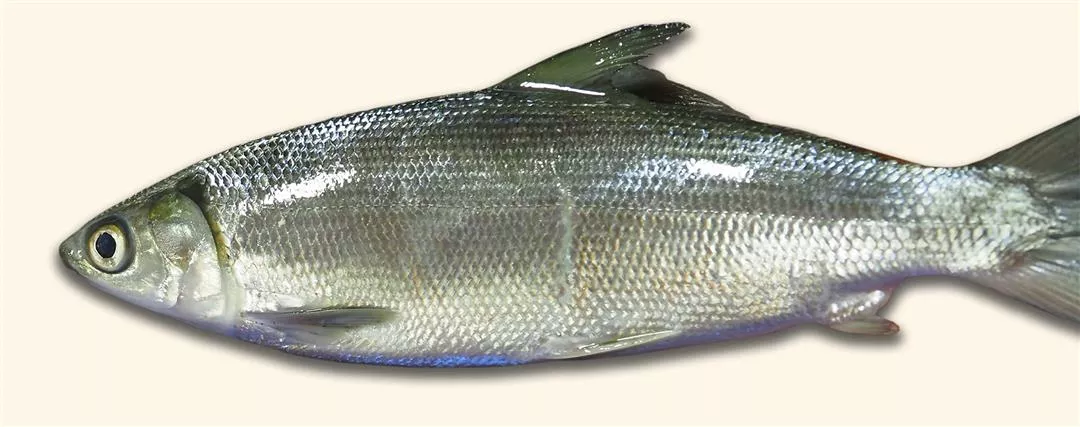
The milkfish gets its English name from the milky-white color of the flesh when the fish is cooked.
Pondside anthropological observations
Parking next to some aquaculture ponds, Cheng shows us that each pond has two or three paddle aerators. He says that milkfish are highly vulnerable to a lack of oxygen and will quickly die if there is not enough of it. This is why many fisher farmers will come out at four or five each morning to check their ponds, and in July will even stay in shelters next to them. Cheng also asks us to observe whether there are any birds hanging around near the ponds. He explains that sick or dead fish will drift to the edges of the ponds, where they will be eaten by birds, so it is important to observe bird behavior around the ponds.

Harvesting milkfish: Workers collaborate to draw the net onshore.
The hidden knowledge of fish farming areas
Along the way, Cheng receives a message from a fish dealer informing him of the locations of today’s fish harvest. He reveals: “It is usually only early in the morning that aquaculture workers find out which ponds will be harvested that day. Moreover, the truck drivers who deliver produce to wholesale markets at night have the task of observing how well they sell, so that the dealer can decide early the next morning how much seafood to harvest.”
“Milkfish aquaculture in Taiwan has developed a very fine division of labor, with some people raising the fish and others harvesting them. This spreading of risk has been practiced for many years now.” Different businesses take on the tasks of incubating fish eggs and hatching them into fry, raising small fry, and the feeding and care of adult fish. Fishpond owners are only responsible for raising the fish, while it is fish dealers who harvest them.
The workers who harvest the fish first set up their equipment at the venue. They erect tents to provide shade and put up temporary canvas pools. Two workers circle the outer edge of the pond on a raft, dropping a fishnet into the water. Then workers on the bank begin to draw in the net, ultimately driving the fish into a rectangular net that was previously installed at one side of the pond. Cheng says: “Early in the morning at 6 or 7 a.m. workers will come and disturb the water to frighten the fish and cause them to void the contents of their intestines, because when a fish’s gut is clean it will stay fresh longer.” Next workers use a crane to hoist fish out of the pond in baskets and deposit them in the canvas pools, after which staff from the dealer grade the fish by size. Smaller fish are separated out and put to one side; they will be sent to a processing factory to be filleted for belly steaks. The rest are packed into Styrofoam containers and covered in ice, ready to be shipped to wholesale markets the same day.
Cases of milkfish that are harvested during the day are taken away by truck at about 4 p.m. and delivered to wholesale markets across Northern Taiwan. Fish harvested at night or in the early morning hours are mainly sent to local markets or markets in Southern Taiwan. Traditionally, the workers who harvest these fish bend them as they pack them in baskets. “This is a signal to the people in the markets that these are fresh fish.”

After milkfish are harvested they are sorted by size, with full-sized fish being sent to market and smaller fish going to filleting plants to produce cuts such as belly steaks.
A fish that supports many families
We next follow our guide to the processing plant of the fish dealer, Sea Ground Enterprise Company. Entering the factory, Cheng gestures as he explains: First the scales are removed by machine, then the heads are cut off, the belly meat is cut away, and the fish is gutted and filleted. Each individual worker has their own work station, and with a small knife they can cut and trim a belly steak in less than half a minute. There are also people scraping out boneless fish meat with metal spoons, part of which will be used as raw material for fish balls. Even the scraps are gathered up and sold to make animal feed. No part of any fish is wasted. Cheng points out: “Milkfish processing is labor-intensive, but consequently it creates a lot of jobs that support many families in Taiwan.”
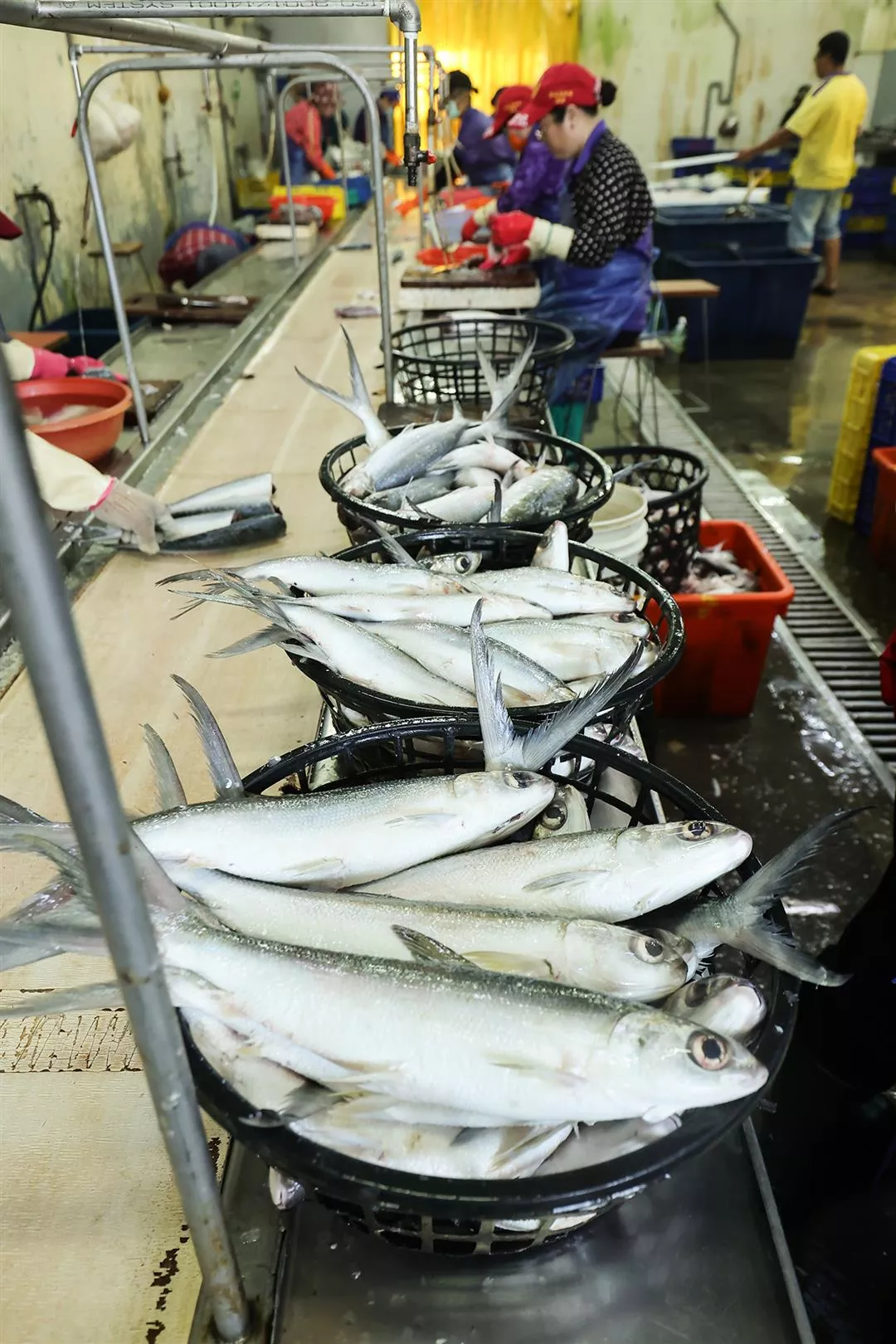
An initial processing line for milkfish. The work is labor intensive, providing many jobs to support local families.
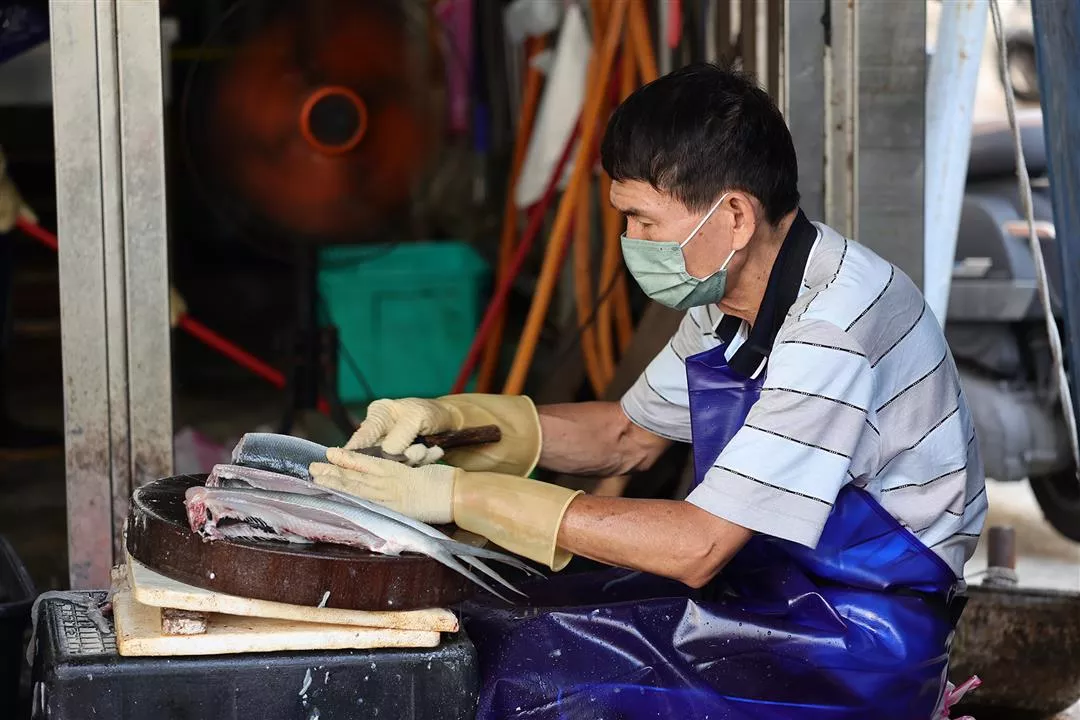
An initial processing line for milkfish. The work is labor intensive, providing many jobs to support local families.

Using just a small knife, it takes less than half a minute to cut and trim a milkfish belly steak.
The flavor of milkfish
Each year Taiwan produces some 60,000–70,000 metric tons of milkfish, of which 80% is sold to the domestic market. Huang Chih-yang notes: “Milkfish is popular with ordinary people. Not only is it produced locally, but it has also affected our whole dietary culture.” The methods of preparing milkfish express the dietary customs and preferences of each region of Taiwan. In the Taipei metropolitan area, menus mainly offer milkfish belly and milkfish congee. However, along Taiwan’s Southwest Coast, where most milkfish is produced and consumed, offerings are far more diverse.
Along Provincial Highway 17 near the Southwest Coast, there are many food stalls with signs advertising “braised pork over rice” and “fresh fish soup,” with milkfish being sure to be among the choices of fish for the soup. Huang Chih-yang vividly describes how customers will first order braised milkfish head as an appetizer, then follow with a main dish and a soup. In Tainan, eatery owners will ask if you want shredded ginger in your soup, or pickled watermelon slices, which give a totally different texture and flavor. Customers may also choose to accompany their meal with scalded fish skin or pan-fried fish viscera.
“People who enjoy seafood in fact don’t go out of their way to order fish belly, because it offers only limited methods of preparation and seasoning, and also there is little fun to be had eating it. The parts that are fun to eat are the head or the viscera,” says Huang. Although there is not much meat on a milkfish head, using one’s mouth and tongue to suck out all the particles of meat, collagen, fat, and juice really gives a sense of accomplishment. If you don’t mind eating viscera, Huang recommends that you try fish viscera. An order of fish viscera normally includes the intestines, liver, and stomach, which all have their different textures. He describes fish stomach as being crispy, the intestines as soft and smooth, and the liver as delicate. This dish is tasty whether the ingredients are boiled and served with a wasabi soy sauce dip, or dry-fried and eaten with pepper salt.
A dry-fried milkfish belly steak is something that many Taiwanese living abroad miss very much, while the traditional recipe of milkfish belly with fermented pineapple and black soybeans is another deeply nostalgic dish. Recently, creative chefs have been cooking milkfish fillets with the dorsal fin attached until they are brown and crispy, as a dish to go with alcoholic drinks. Others use whole milkfish to extract an essence that is sold as a health food product. From head to tail, this is a fish that has many intriguing uses.
If you want to get to know Taiwan better, this fish which has been a part of the lives of Taiwanese for over 400 years is a great place to start collecting stories of Taiwan.
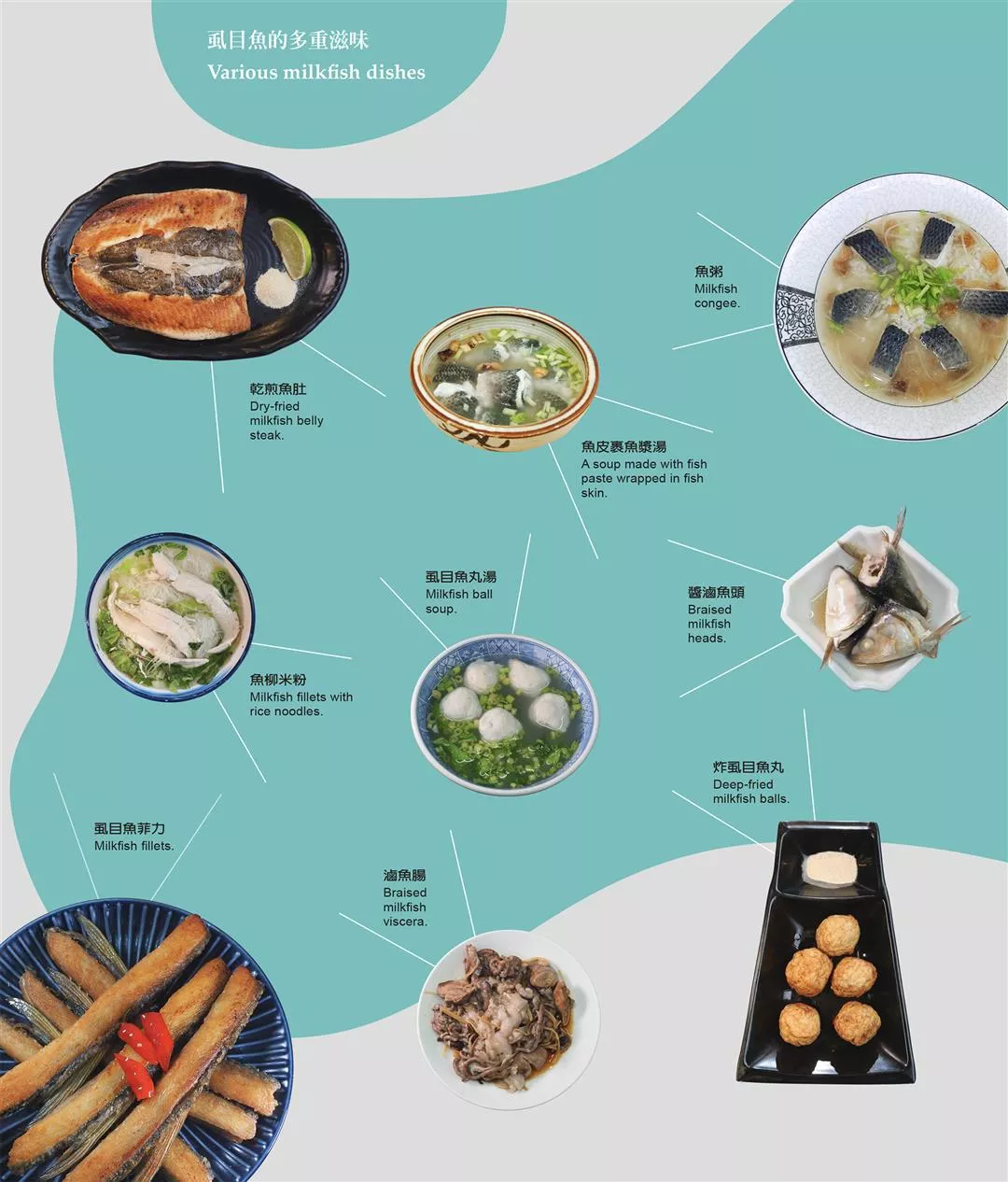
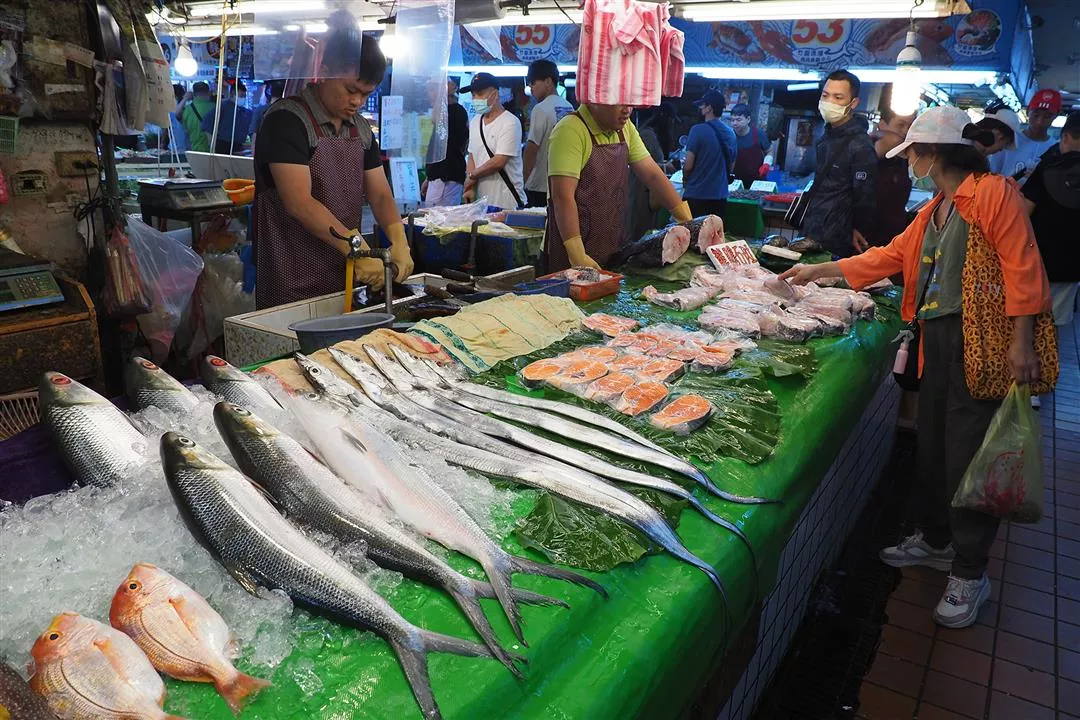
You can find milkfish in Taiwanese markets all year round—it is a popular fish with ordinary people.




@List.jpg?w=522&h=410&mode=crop&format=webp&quality=80)


